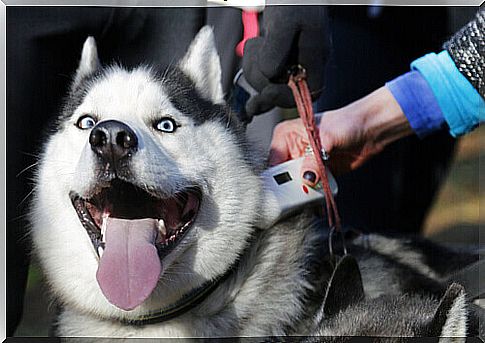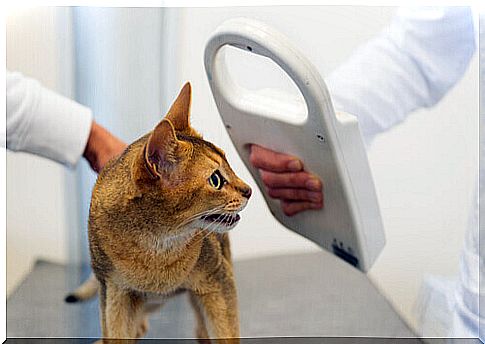What Is The Pet Microchip For?

Microchip implantation in our pets is now one of the most effective tools to control them. In case of loss, abandonment or theft of the pet, if someone takes it to an animal shelter or to the veterinarian, it can be identified immediately.
What is the microchip?
The famous microchip is an electronic animal identification system, usually made up of two parts: one is the microchip itself and the other is the capsule that surrounds it. It is made of biocompatible glass (non-allergenic) and as small as a grain of rice.
How to implant the microchip?

Microchip implantation must be done by a veterinarian. The specialist introduces the capsule into the animal’s body, at the nape of the neck, and pushes it through the skin using an injector.
Each of these little devices has a set of unique numerical codes, something like the animal’s DNA.
This microchip is implanted once in a pet’s lifetime and remains in its body forever. The information related to the dog or cat will be registered by the Zoonoses Centers of each city hall, which stores the data of each chip, such as the owner’s name, address and contact telephone numbers.
The best age to perform this procedure is from a month and a half or two months old. After that age, it is possible to implant the device at any time in the animal’s life.
The accuracy of the data
It is essential that the data reported to the veterinarian is correct and up-to-date, as this will be the information recorded in the database and that will be used in case of loss of the animal.
If any change of owner or address is made, it is important to contact the veterinarian immediately, who will advise you on the steps to be taken to change the data. For legal reasons, it is the owner who is registered in the database, so he is responsible for any problem that the animal may suffer.
Likewise, if the pet dies, we also have to communicate the death through a document delivered by the veterinarian.
In Spain, the Community of Madrid was the first in the country to make the identification of dogs and cats with the microchip mandatory. Gradually, other autonomous communities adopted the same measures, increasing control over the animals.
The advantages of the microchip
Implanting this chip in our pet can bring many benefits, including:
- First, the procedure is a legal recognition that we are the owners and owners of our mascot. It is not possible to spoof data from a microchip.
- If the animal is lost, veterinarians, shelters and government agencies will be able, through a reader, to access our data.
- Electronic identification helps prevent the abandonment of animals, as the law provides for heavy penalties for those who abandon or mistreat an animal. In this way, it is possible to prove who is the owner and legal responsible for an abandoned or mistreated animal.
In case of loss or theft…

The best thing to do in situations like this to identify and retrieve a lost dog or other pet is to notify the local police, the Zoonoses Center and the adoption center as soon as possible if the animal has been adopted.
We will inform these organizations and entities the chip number and name of the animal, our personal details and, if we know, the date and place where the animal was lost or stolen.
The law requires owners to identify domestic animals, including cats that do not leave the house, in case of abandonment, loss, theft, etc. In some places, animals are identified with a tattoo, but electronics are increasingly adopted.









